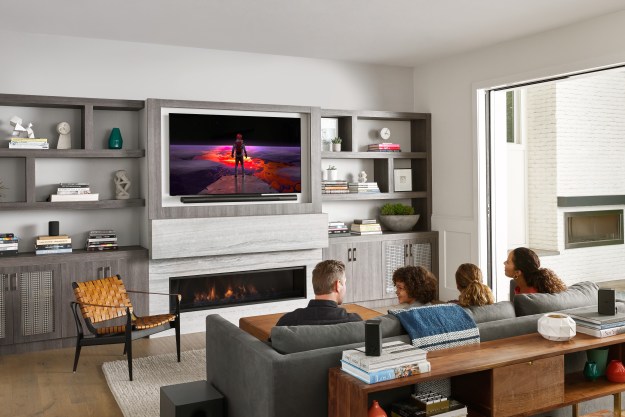For several articles we have been discussing how to get the most out of your new home theater system. One of the most important tools you can use at home to really optimize your system is to invest in a calibration DVD. These are discs that provide standardized, industrial test signals that will help you set your TV and receiver for the best performance.
Many people delegate this task to a paid professional. While this is great if you have the extra money but personally I would rather get a number of new DVDs for the money spent and calibrate my system myself. This also means that I can recalibrate the system on a regular basis. This is important since the settings can and do drift. You will also have to recalibrate whenever you make a change to your room or your system. Recalibrations should be done about every six months. The best time is in the spring and fall when temperature changes can alter the settings on your equipment.
Unfortunately, of the three most popular calibration DVDs made, Ultimate DVD Platinum, Video Essentials and Avia, only Avia is still being produced. You can still find used copies of the other two around and the search will be well worth the effort. The cost of one of these discs new is about $40 and considering the use you will get out of it a must have.
In this article we will consider the use of these discs in the calibration of the audio equipment in your home theater.
The first thing to do with a calibration disc is run through the tests with the audio format you will use the most. These Audio Enhancement tools are usually optimized for the standard audio formats provided by DVDs: PCM, Dolby Digital Stereo, Dolby Surround, Dolby Digital 5.1 and DTS Digital Surround. Each formats has its own standards but most of the tests are the same with all formats. Lets go through the more common tests a good calibration disc should have.
Channel Identification. This test insures all individual source channels are connected through your system to the correct loudspeakers. It usually consists of a standardized tone or voice that moves in turn between each speaker. Typical the order is front left, center, front right, rear right, rear left and sub woofer. Use this test to make sure each speaker is properly connected to the correct audio channel. There is nothing worse than a person moving to the left of the screen while the sound he makes moves to the right.
Polarity Test. As you may remember we spent a lot of time and effort making sure the wires used to connect the speakers are consistent. Most good quality speaker wires are color coded in some manner; usually a stripe on one side or one wire silver while the other is copper color. The reason for this is polarity. Polarity simply put refers to the direction the speaker is actually moving. If one speaker is moving out while another is moving in there will be distortion and the sound waves produced will cancel out each other. Not a good thing. This test runs through pairs of speakers, usually in the order of LF/RF, RF/RR, LR/RR, LR/LF, LF/C. As you go through the tests if you hear one set of tones muddy or lower than the other check the color-coding of the wires to those speakers. This is also called a phase test.
Level Adjustment. Checks volume, level, loudness, and balance of each speaker in turn. This is done with band something called limited pink noise. Al you really need to know is pink noise is a non-specific noise that is produced in a standard volume. You want to hear the same level coming from each of the five main speakers during this test. You can get a sound meter from radio shack and set it for 78-85db C weighting and level response Do not set your system at maximum for this or any other test. Try to arrange things so that the dials are about in the middle of the range. For circular dials this means the little white indicator are all straight up in the middle of the dial.
Sub Woofer Level Adjustment. You may have just noticed that the sub woofer was not included in the above level tests. The reasons for this are a pink noise of a lower frequency is required to properly test your sub woofer. This test balances the audio level of the subwoofer to achieve flat and consistent response. Pink Noise of 20Hz to 80Hz is typically used. Set the volume to no more than 50% of the subwoofer’s range. This is also a phase test. The sub woofer should be set to about 3 Db lower than the other speakers in your system.
Noise Floor tests. Unless you have a professionally installed, acoustically perfect room there will be ambient noise in your home theater. Things like air conditioners, heaters, and the refrigerator in the next room all make noise. On most home theater receivers you can set the performance to accommodate for these factors. This test will run through a series of tones are a variety of frequencies, typically set for 1KHz, 4KHz, 8KHz, 250Hz and 63Hz. In this test you lower the settings on your amplifier or receiver until you can no longer hear the test tone. This test provides the optimization of the dynamic range of your system. Dynamic range is defined as the difference between the loudest and lowest signals your system produces. Technically speaking various third octave band limited pink noise is used.
Rattle Test Sequence. The last of the common audio to consider is one that makes sure your new home theater will not shake the room and everything in it. While many people think a well functioning home theater should emulate a 5.5 earthquake this is not the case. Such vibrations are not only distracting; mask the real audio content of the film but it can damage your equipment. This test goes through each speaker in turn with several frequencies. The test locates objects in your room that will vibrate in response to your speakers. It also tests for speaker rattle. Various swept sine waves are used for this test. Sympathetic vibrations in your room and equipment will be produced so expect things to shake a bit during this round of testing. Because this test can get loud be conservative in the settings on your system. The frequencies used can be harmful to small children and pets so keep them out of the room and make sure you don’t push your system to the point where your hearing in affected.
Just a last note about using these calibration discs, it is not uncommon for your equipment to come out of the box set incorrectly. Most manufacturers set their systems to sound great in a show room where the acoustics are typically much brighter than the average room in a home. The most incredibly designed piece of testing equipment anywhere is your ears. Learn to trust them. You spent the money on this system and it should be up to your standards of what sounds good, not some group of people in white lab coats in some testing facility. Use these tests as a base line to start. Set things for how you like them. These discs help you make these decisions; they should not be used to make those decisions for you.


